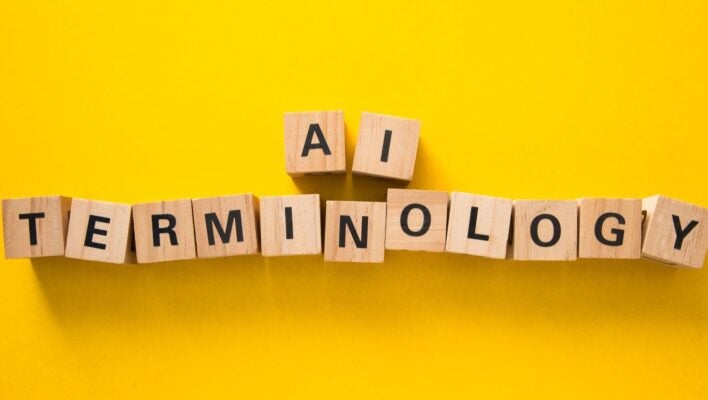Artificial intelligence is pretty much everywhere in 2026. From business software providers adding AI features to their platforms to people using ChatGPT for therapy, the technology continues to get more and more engrained in everyday life.
As a result, the new lingo and jargon that’s been bouncing around the tech industry for the last few years is starting to find its way into more casual settings, and understanding it is becoming more and more vital for those that want to stay in the loop.
So, in this guide, we’ll explain some of the AI terms you have or may not have heard over the last few years, in hopes of providing you with a bit context when the topic inevitably comes up at your business.
AI Terms Explained
Below, we’ve chosen some of the more common and commonplace AI terms and provided brief but helpful definitions and explanations. To learn more about AI in general, be sure to check out the AI content on Tech.co.
AI (Artificial Intelligence)
AI stands for artificial intelligence, a broad term for any technology that seeks to replicate human intelligence. More specifically, artificial intelligence refers to technology that can think and learn like humans do.
Algorithm
An algorithm is the set of instructions provided to an AI model, or any piece of software really, that dictates how it operates. The TikTok algorithm, for example, describes the way in which the social media platform operates for specific users.
Chatbot
A chatbot is an AI-powered piece of software that is designed to replicate a human interaction through a messaging or voice-activated platform.
Data mining
Data mining is the practice of harvesting huge sets of data from users with the propose of using that data to recognize patterns and inform software on how to better serve users.
Deepfake
A deepfake is an image or video that features the likeness of a person that exists and is generated entirely by AI. The technology is concerned extremely dangerous and is making scams much harder to spot in 2026.
Generative AI
Generative AI describes any artificial intelligence program that generates something, including written copy, images, and video. Most of the artificial intelligence in the news right now is generative AI, including tools like ChatGPT and Gemini.
Hallucination
An AI hallucination is defined as the common occurrence of an AI platform providing incorrect, false, or misleading answers to user queries. AI errors have unfortunately become very common for the software, but hopefully it will get better over time.
Large language model (LLM)
A large language model, or LLM, describes an AI model that is specifically trained on massive data sets of text, so that it can understand natural language prompts and respond in turn with equally human-like answers.
Machine learning
Machine learning is a type of AI that focuses on a particular model learning in the same way as humans. As such, a program with machine learning will improve and grow over time on its own, without human input.
Natural language processing (NPL)
Natural language processing, or NPL, is defined as the type of AI processing focused on understanding queries and providing answers that mirror the kind of language used by actual humans in conversation.
Neural network
A neural network is a type of AI processing that resembles the human brain, using connected nodes — or neurons — organized in layers. This allows for more in-depth “thoughts” from the AI, but it does require massive sets of data to accomplish.
Prompt
In the context of AI, a prompt is the text you input to an AI model. Prompts can come in many forms, including questions, queries, or commands, and can feature many different factors, like links, images, or video.
Recognition
When talking about AI, recognition generally refers to image recognition, in which a user will input an image or video and AI technology is used to recognize certain elements within it.
Token
A token is an allotment for prompts used on AI platforms. Essentially, AI platforms like ChatGPT will only allow users a certain number of tokens, depending on how much they pay. Tokens are also called “credits” or even just “messages,” sometimes depending on which platform they’re on.
Training data
Training data describes the massive sets of data that are used by AI companies to train their models in hopes of making them even more intelligent over time.
Vibe Coding
A term used to describe coding without using an actual coding language, vibe coding lets users create apps, websites and software with simple plain text prompts. It means that literally anyone can code now, thanks to AI.
The Importance of Understanding AI Terms in 2026
If you still think that AI is a passing fad, you are tragically mistaken. The technology is single-handedly propping up the US economy, with one economist noting that nearly 92% of U.S. GDP growth across the first half of last year can be attributed to AI.
Subsequently, the business world has been fully embracing the technology over the last few years, with mass layoffs and pivoting operations sweeping virtually every industry under the sun.
Suffice to say, if you want to remain gainfully employed for the foreseeable future, or just want to be able to hold a conversation with your more tech-enthused friends, understanding these AI terms is absolutely necessary.




